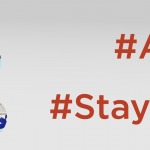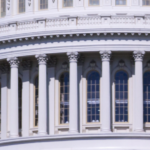CMS Releases Update Guidance on Hospital EMTALA Obligations Related to COVID-19
On March 9, 2020, CMS published a memorandum to State Survey Agency Directors that provides updated guidance on the obligations of hospitals and critical access hospitals (CAHs) under the Emergency Medical Treatment and Labor Act (EMTALA). This guidance was issued in response to numerous inquiries regarding the EMTALA obligations of these facilities as they struggle to respond to the COVID-19 pandemic.
Under EMTALA, hospitals and CAHs with emergency departments have an obligation to provide an appropriate medical screening examination to any individual that comes into the emergency department seeking examination or treatment of an emergency medical condition. Hospitals and CAHs are further required to make a determination as to whether the patient actually has an emergency medical condition, and, if so, to provide stabilizing treatment within the hospital’s capabilities, or make appropriate arrangements to transfer the patient to a facility that does have the necessary capabilities.
The hospitals and CAHs had requested guidance on how they can fulfill their basic EMTALA obligations while minimizing the risks of exposure from COVID-19 infected individuals to their staff and other patients in their emergency departments.
Note: in summarizing the CMS guidance document, references to a “hospital” will include both hospitals and CAHs.
Acceptance of Patients Suspected or Confirmed to be Infected with COVID-19
CMS indicated that hospitals with the capacity and the specialized capabilities needed to provide stabilizing treatments are required to accept transfers from hospitals without the necessary capabilities. CMS indicated that it would take into account the recommendations of the Centers for Disease Control (CDC) in assessing a hospital’s capabilities and capacity. CMS further indicated that the presence or absence of negative pressure rooms (Airborne Infection Isolation Room (AIIR)) would not be the sole determining factor related to determining when an EMTALA transfer is required. CMS is advising hospitals to coordinate with their state and local public health officials regarding the appropriate placement of individuals who meet specific COVID-19 assessment criteria, as well as the most current standards for treating patients confirmed to be infected with COVID-19.
CMS is further confirming that hospitals have the ability to set up alternative screening sites on the hospital campus, i.e., the initial medical screening exam does not need to take place in the emergency department. CMS is confirming that individuals may be redirected to an alternative screening site after being logged into the emergency department. This redirection can even take place outside the entrance to the emergency department. Medical screening exams conducted in alternative screening sites must still be conducted by qualifying personnel (i.e., physicians, NPs, Pas, or RNs).
CMS is also indicating that hospitals may set up screening sites at “off-campus, hospital-controlled” sites. Hospitals and community officials may encourage the public to go to these sites instead of the hospital for screening for influenza-like illnesses. However, a hospital cannot tell an individual that has already presented at their emergency department to go to an off-site location for their medical screening exam. Unless the off-campus site is already considered to be a dedicated ED (e.g., a free-standing ED) under EMTALA regulations, the EMTALA regulations would not apply to these off-site screening areas; however, the hospital would be required under its Medicare Conditions of Participation to arrange a referral/transfer to an appropriate hospital if the patient has a need for emergency medical attention.
Finally, communities may set up screening clinics at sites not under the control of a hospital. These sites would not be subject to EMTALA.
EMTALA Obligations when a Screening Suggests Possible COVID-19 Infection
To the extent a hospital determines, following a medical screening exam that a patient may be a possible COVID-19 case, the hospital is expected to isolate the patient immediately. CMS indicated that it expects that all hospitals will be able to provide medical screening exams and initiate stabilizing treatment while maintaining isolation requirements.
Once an individual is admitted to the hospital or the emergency medical condition ends, the hospital has no further obligations under EMTALA.
CMS is further reminding hospitals that the latest screening guidance from the CDC calls for hospitals to contact their State or local public health officials when they have a case of suspected COVID-19.







